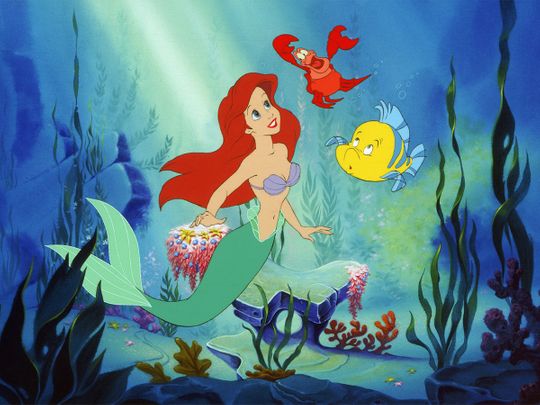
Everyone knows Ariel, star of the Disney movie, The Little Mermaid. But you may not know about her historical, mythical ancestors – Japan’s kappa, or Africa’s Mami Wata.
Click start to play today’s Crossword, where Ariel makes an appearance in one of the clues.
Centuries ago, mysterious merfolk were thought to live, hidden, in the vast ocean depths. Surprisingly, cultures around the world mention these mythical creatures in their stories or songs.
In One Thousand and One Nights, or Arabian Nights, a collection of Middle Eastern folk tales, for instance, mermaids are described as having “moon faces and hair like a woman's but their hands and feet were in their bellies and they had tails like fishes”. In Greek mythology, stories abound surrounding the deity Triton, who was a merman messenger of the sea. And one of the earliest depictions of a mermaid comes from Syrian mythology, where Derceto, a Syrian deity, was half-woman and half-fish, according to a February 2022 report in US-based science news website LiveScience.
While Disney’s Ariel the mermaid became beloved to the masses, thanks to a sanitised version of a Hans Christian Andersen fairy tale (published in 1837), mermaids have not always had a good reputation. In folklore, they are usually associated with misfortune and death, because they supposedly lure sailors off course, causing them to get lost, or forcing them to crash their boats onto rocky shoals. Mermen, too, like the Blue Men of the Minch off the coast of Scotland, have long been thought to be able to summon storms, sink ships and drown sailors.
Across the world, tales of fear and horror surround merfolk. Japanese legends talk about kappa, child-sized water spirits who live in lakes, coasts and rivers, and who look more like animals than humans – they even feature tortoise shells on their backs. The kappa are known in Japan for challenging humans with games of skill, where the penalty for losing is death. They are also said to have a voracious appetite for children, and for those who swim alone in remote areas.
In the west, south and central regions of Africa, on the other hand, the lore casts a far more positive light on these mythical creatures. A water spirit called Mami Wata (meaning mother of the waters), was once revered for her supposed ability to grant beauty, health and wisdom to her people. She’s often depicted as a mermaid or snake charmer.
Despite so many interpretations of mermaids, it’s likely that the origin of this myth may have to do with an animal rather than anything supernatural. Some researchers, according to the LiveScience report, believe that sightings of manatees and dugongs may have inspired such legends. Although they don’t resemble humans up close, when viewed at a distance, in low light, a glimpse of a head, arm or tail before they dive below the surface could cause you to mistake one for a mermaid.
For now, however, they remain real only in our fairytales and legends, nourishing our imagination and inspiring creative literature and art.
What do you think of these mythical creatures? Play today’s Crossword and tell us at games@gulfnews.com.





